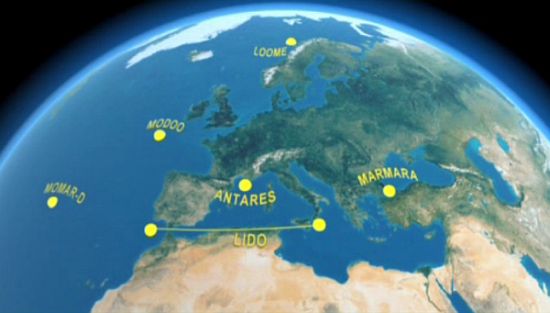Tentacles of internet are now advancing towards the ocean bed, a realm that is untouched by open wireless. Researchers from the University at Buffalo are working on the concept of deep-sea internet. I am saying working as they are still laboring on its feasibility.
The team envision that the underwater wireless network would give control in detecting the tsunami, natural gas exploration, surveillance, keeping a check on pollution and similar other disturbances.
In the words of Tommaso Melodia, lead researcher,
A submerged wireless network will give us an unprecedented ability to collect and analyze data from our oceans in real time. Making this information available to anyone with a smartphone or computer, especially when a tsunami or other type of disaster occurs, could help save lives.
Although internet through water has already been established by sea cables but the actual underwater network is missing. The wireless signals are radio waves and these waves are electromagnetic in nature. Radio waves are absorbed by water, which makes it difficult to propagate in sea. So for communication and detecting objects under the sea, Sound Navigation And Ranging or sonar technique is employed. But the same cannot be used on land as sound will distort in air.
In order to make a real balance between water and land, the scientists –at the moment -use an incremental approach.
The Incremental Approach
A set of researchers are dedicated to study the deep-sea communication. Sensors in the deep water collect the data and pass onto a floating buoy on the surface. The glider then translates the acoustic waves into radio waves, which are further picked up by a satellite and then finally beamed back to a main computer.
In an effort to break this fragmented approach, the team from Buffalo is trying to generate a set of connections of deep-water sensors that could offer a universal communication framework around teams – be it ocean or land. And accessible to working groups across any fields. For instance, researchers taping the seismic activity can use it forewarning tsunamis, police may use it to capture submarines employed by drug smugglers, scholars who are working independently and remotely may use the data from sensors for their experiments so on and so forth.
The Future
At the moment, the technology is far from practical application as it is in conceptual stage. If this technology is able to find its ground then the first question that loom before us will be the vulnerability of marine life. The networks might pose threat to the oceanic life like the sonars do.
Second question will be the accountability and control of the entire network. Infrastructure cost too would be high and so who would take charge of it.
If we talk about the concept, it does have a futuristic undertone with a great potential. No doubts it does sounds li’l weird at the moment but we have to agree, like imagination, technology too knows no limits, and if it does becomes a reality humanity would take a huge jump in thwarting natural calamities till some extent if not hundred percent.




